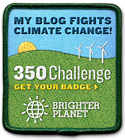Stay Green While Getting Clean This Spring
From de-cluttering and organizing to deep-cleaning your home, Spring Cleaning is a rite of passage for home owners. Spring comes and goes, and our homes look and smell cleaner than they have all year long.
To make way for Spring and Summer festivities, a good thorough cleaning is in order. There are easy ways to stay green while getting clean. 
De-Clutter is a Must
While de-cluttering your home, don’t throw everything out. There are many individuals who need clothing, furniture and canned foods. While going through your home, keep donation locations and local charities in mind. Sort everything of importance and utilize a “three-box” rule: keep, toss/donate, store. For everything you want to keep, find a new home for (but be careful not to make a “new” clutter hotspot). Donation items can be taken to a local charity as soon as possible. Some Salvation Army locations will pickup the items for you, as long as you schedule a pickup. For all those items you wish to keep and have no room for (or are too sentimental to donate and toss), find a local storage facility center. Companies like Unclebobs.com have over 400 storage facility centers across the U.S.
Sometimes Store Bought Isn’t Always Better
The Queen of Clean, Linda Cobb, has been informing thousands of people everywhere through TV sets, magazines and books how simple and easy cleaning can be without spending thousands on store and name-brand products. In her book, “A Queen For All Seasons,” she outlines the importance of simple household products when it comes to cleaning.
Baking soda is a wonderful deodorizer and mild abrasive. This is great to use in the refrigerator for smells and spills. White vinegar is an all-purpose cleaner. It’s great for whitening clothes, cleaning stains, and getting rid of soap scum and mildew. Club soda works on all sorts of spills while lemon juice is a natural bleach.
Air Freshener
Store-bought air fresheners smell wonderful but they may contain toxic chemicals including formaldehyde and benzene, according to National Geographic’s Green Living. Instead of spending money and putting dangerous chemicals in the air, make your own with easy-to-find and eco-friendly ingredients. Simply combine a few drops of vanilla, almond, lavender or other extract with a cup of water in a spray bottle and spritz away.
Be Conscious of What You Toss
I never knew why, but when I was a young girl my father always told me to never throw batteries away in the trash — and I never did. Still don’t to this day. The only difference is now I understand why I shouldn’t toss them in the trash. They contain metals such as alkaline, zinc, nickel and cadmium. Batteries aren’t the only things that cause harm if disposed of incorrectly.
- Electronics: Old TVs, DVD players, laptops and printers should never be tossed in the dumpster. Instead, take them to an e-waste center.
- CFL light bulbs: They’re great for the environment — sort of. They contain trace amounts of mercury. The mercury can leak if not properly disposed. Take them to your local Household Hazardous Waste (HHW) center, where they can be disposed of properly.
- Smoke detectors: According to The National Association of State Fire Marshals, smoke detectors should be replaced every 10 years. BrightNest.com states that ionization smoke detectors should be mailed back to the manufacturer due to the small amount of radiation they emit. For Photoelectric smoke detectors, any electronics recycling facility will take them.
- Paint: Oil-based paints contain a number of chemicals and should never be thrown in the trash. Take them to a local charity or your local HHW facility.


















